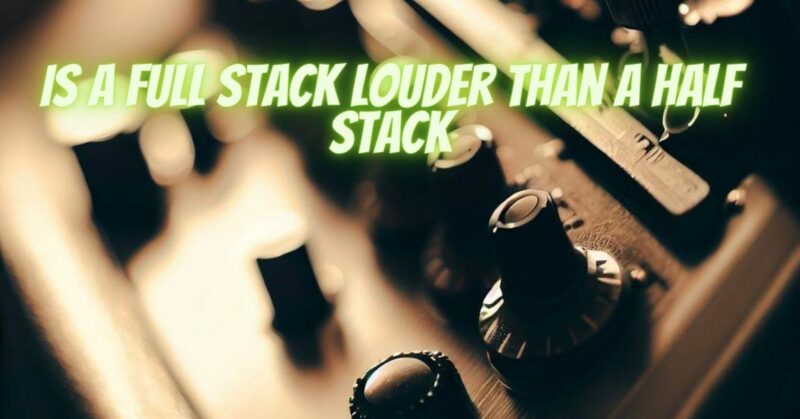In the world of rock and roll, the image of towering amplifier stacks evokes visions of sonic power and stage presence. But the question often arises: Does a full stack produce more volume compared to a half stack? While the idea of a towering wall of amplifiers might seem synonymous with sheer volume, the reality is more nuanced. In this article, we’ll unravel the truth behind the full stack vs. half stack volume debate and explore the factors that truly influence the sonic impact of amplifier configurations.
Understanding Amplifier Stack Configurations:
- Half Stack: A half stack consists of a single amplifier head paired with one speaker cabinet. This configuration is commonly used and offers a balance between power and portability.
- Full Stack: A full stack comprises an amplifier head and two speaker cabinets – one positioned above the other. This setup was popularized by arena-rock performances and has become an iconic symbol of rock music.
Dispelling the Volume Myth:
Contrary to popular belief, the volume difference between a full stack and a half stack is not as significant as one might assume. The perception of increased volume is often more related to the psychological impact of visual and physical presence rather than actual decibel levels.
Factors Affecting Volume:
- Amplifier Output Power: The amplifier’s output power, measured in watts, has a more direct impact on volume than the number of speaker cabinets. A high-wattage amplifier can produce considerable volume regardless of stack configuration.
- Speaker Efficiency: Speaker efficiency, measured in decibels per watt, determines how efficiently the speakers convert amplifier power into sound. Higher efficiency speakers can produce more volume with less amplifier power.
- Room Acoustics: The acoustic properties of the venue or performance space significantly affect perceived volume. A reflective environment can amplify sound, creating a stronger sonic presence.
Visual and Aesthetic Impact:
While the actual volume difference is marginal, the visual impact of a full stack can contribute to the perception of power and volume. The towering appearance of a full stack can create a sense of awe and impact, influencing audience perception.
Practical Considerations:
- Transportation: Full stacks are bulkier and heavier, making transportation and setup more challenging compared to half stacks.
- Sound Balance: The increased number of speaker cabinets in a full stack might influence the balance between different frequency ranges, affecting the overall tonal character.
The idea that a full stack inherently produces significantly more volume compared to a half stack is a misconception. While the visual impact and presence of a full stack can contribute to the perception of volume, the actual volume difference is minor compared to other factors like amplifier power, speaker efficiency, and room acoustics. When choosing between a full stack and a half stack, consider your practical needs, tonal preferences, and performance requirements. Ultimately, it’s the harmonious interaction between amplifier, speaker, and venue that truly amplifies the rock ‘n’ roll experience.


